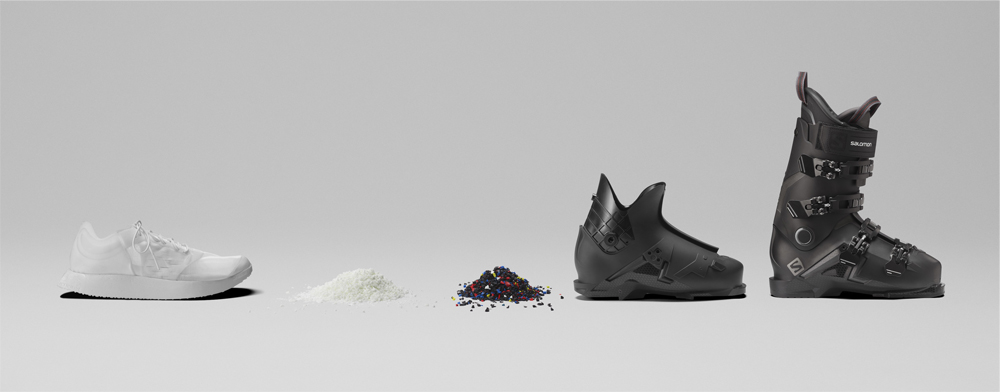

Recycling status of polyurethane materials in China
1, polyurethane production plant will produce a large number of scraps every year, due to the relatively concentrated, easy to recycle. Most plants use physical and chemical recycling methods to recover and reuse scrap materials.
2. Waste polyurethane materials used by consumers have not been well recycled. There are some enterprises specializing in the treatment of waste polyurethane in China, but most of them are mainly incinerated and physical recycling.
3, there are many universities and research institutions at home and abroad, committed to looking for polyurethane chemical and biological recycling technology, published a certain academic results. But really put into large-scale application of very few, Germany H&S is one of them.
4, China's domestic waste classification has just started, and the final classification of polyurethane materials is relatively low, and it is difficult for enterprises to continue to obtain waste polyurethane for subsequent recycling and utilization. The unstable supply of waste materials makes it difficult for enterprises to operate.
5. There is no clear charging standard for the recycling and treatment of large waste. For example, mattresses made of polyurethane, refrigerator insulation, etc., with the improvement of policies and industrial chains, recycling enterprises can obtain considerable income.
6, Huntsman invented a method to recycle PET plastic bottles, after a number of strict processing processes, in the chemical reaction unit with other raw materials reaction to produce polyester polyol products, product ingredients up to 60% from recycled PET plastic bottles, and polyester polyol is used to produce polyurethane materials one of the important raw materials. At present, Huntsman can effectively recycle 1 billion 500ml PET plastic bottles per year, and in the past five years, 5 billion recycled PET plastic bottles have been converted into 130,000 tons of polyol products for the production of polyurethane insulation materials.

Physical Recycling
This method is the most widely used recycling technology. The soft polyurethane foam is pulverized into several centimetres of fragments by a crusher, and a reactive polyurethane adhesive is sprayed in the mixer. The adhesives used are generally polyurethane foam combinations or terminal NCO-based prepolymers based on polyphenyl polymethylene polyisocyanate (PAPI). When PAPI-based adhesives are used for bonding and forming, steam mixing can also be carried in. In the process of bonding waste polyurethane, add 90% waste polyurethane, 10% adhesive, mix evenly, you can also add part of the dye, and then pressurize the mixture.
Thermosetting polyurethane soft foam and RIM polyurethane products have a certain degree of thermal softening plasticity in the temperature range of 100-200℃. Under high temperature and high pressure, waste polyurethane can be bonded together without any adhesive. In order to make the recycled product more uniform, the waste is often crushed and then heated and pressurized.
Polyurethane soft foam can be turned into fine particles by low temperature grinding or grinding process, and the dispersion of this particle is added to the polyol, which is used to manufacture polyurethane foam or other products, not only to recover the waste polyurethane materials, but also to effectively reduce the cost of products. The pulverized powder content in MDI based cold curing soft polyurethane foam is limited to 15%, and a maximum of 25% pulverized powder can be added to TDI based hot curing foam.
Chemical Recycling
Diol hydrolysis is one of the most widely used chemical recovery methods. In the presence of small molecular diols (such as ethylene glycol, propylene glycol, diethylene glycol) and catalysts (tertiary amines, alcoholamine or organometallic compounds), polyurethanes (foams, elastomers, RIM products, etc.) are alcoholized at a temperature of about 200°C for several hours to obtain regenerated polyols. Recycled polyols can be mixed with fresh polyols for the manufacture of polyurethane materials.
Polyurethane foams can be converted to the initial soft polyols and hard polyols by amination. Amolysis is a process in which polyurethane foam reacts with amines during pressurization and heating. The amines used include dibutylamine, ethanolamine, lactam or lactam admixture, and the reaction can be carried out at temperatures below 150 ° C. The final product does not require purification of the directly prepared polyurethane foam and can completely replace the polyurethane prepared from the original polyol.
Dow Chemical has introduced an amine hydrolysis chemical recovery process. The process consists of two steps: the waste polyurethane is decomposed into high concentration dispersed aminoester, urea, amine and polyol by alkylolamine and catalyst; Then the alkylation reaction is carried out to remove the aromatic amines in the recovered material, and the polyols with good performance and light color are obtained. The method can recover many kinds of polyurethane foam, and the recovered polyol can be used in many kinds of polyurethane materials. The company also uses a chemical recycling process to obtain recycled polyols from RRIM parts, which can be reused to enhance RIM parts by up to 30%.
Hydrolysis method - Sodium hydroxide can be used as a hydrolysis catalyst to decompose polyurethane soft bubbles and hard bubbles to produce polyols and amine intermediates, which are used as recycled raw materials.
Alkalolysis: polyether and alkali metal hydroxide are used as decomposition agents, and carbonates are removed after foam decomposition to recover polyols and aromatic diamines.
The process of combining alcoholysis and amolysis -- polyether polyol, potassium hydroxide and diamine are used as decomposition agents, and carbonate solids are removed to obtain polyether polyol and diamine. The decomposition of hard bubbles can not be separated, but the polyether obtained by the reaction of propylene oxide can be directly used to make hard bubbles. The advantages of this method are low decomposition temperature (60~160℃), short time and large amount of decomposition foam.
Alcohol phosphorus process - polyether polyols and halogenated phosphate ester as decomposition agents, decomposition products are polyether polyols and ammonium phosphate solid, easy separation.
Reqra, a German recycling company, promotes a low-cost polyurethane waste recycling technology for the recycling of polyurethane shoe waste. In this recycling technology, the waste is first crushed into 10mm particles, heated in the reactor with a dispersant to liquify, and finally recovered to obtain liquid polyols.
Phenol decomposition method -- Japan will waste polyurethane soft foam crushed and mixed with phenol, heated under acidic conditions, carbamate bond broken, combined with phenol hydroxyl group, and then react with formaldehyde to produce phenolic resin, add hexamethylenetetramine to solidify it, can be prepared with good strength and toughness, excellent heat resistance phenolic resin products.
Pyrolysis - polyurethane soft bubbles can be decomposed at high temperatures under aerobic or anaerobic conditions to obtain oily substances, and polyols can be obtained by separation.
Heat recovery and landfill treatment
Recovering energy from polyurethane waste is a more environmentally friendly and economically valuable technology. The American Polyurethane Recycling Board is conducting an experiment in which 20% of waste polyurethane soft foam is added to a solid waste incinerator. The results showed that the residual ash and emissions were still within the specified environmental requirements, and the heat released after the waste foam was added greatly saved the consumption of fossil fuels. In Europe, countries such as Sweden, Switzerland, Germany and Denmark are also experimenting with technologies that use energy recovered from the incineration of polyurethane-type waste to provide electricity and heating heat.
Polyurethane foam can be ground into powder, either alone or with other waste plastics, to replace fine charcoal powder and burn in a furnace to recover heat energy. The combustion efficiency of polyurethane fertilizer can be improved by micropowder.
In the absence of oxygen, high temperature, high pressure and catalyst, soft polyurethane foams and elastomers can be thermally decomposed to obtain gas and oil products. The resulting thermal decomposition oil contains some polyols, which are purified and can be used as feedstock, but are generally used as fuel oil. This method is suitable for recycling mixed waste with other plastics. However, decomposition of nitrogenous polymer such as polyurethane foam may degrade the catalyst. So far this approach has not been widely adopted.
Since polyurethane is a nitrogen-containing polymer, no matter which combustion recovery method is used, the optimal combustion conditions must be used to reduce the generation of nitrogen oxides and amines. Combustion furnaces need to be equipped with appropriate exhaust gas treatment devices.
A considerable amount of polyurethane foam waste is currently disposed of in landfills. Some foams cannot be recycled, such as polyurethane foams used as seedbeds. Like other plastics, if the material is always stable in the natural environment, it will accumulate over time, and there is pressure on the environment. In order to decompose the landfill polyurethane waste under natural conditions, people have begun to develop biodegradable polyurethane resin. For example, the polyurethane molecules contain carbohydrates, cellulose, lignin or polycaprolactone and other biodegradable compounds.
Recycling Breakthrough
In 2011, Yale University students made headlines when they discovered a fungus called Pestalotiopsis microspora in Ecuador. The fungus is able to digest and break down polyurethane plastic, even in an air-free (anaerobic) environment, which could even make it work at the bottom of a landfill.
While the professor who led the research tour cautioned against expecting too much from the findings in the short term, there is no denying the appeal of the idea of a faster, cleaner, side-efficence-free and more natural way to dispose of plastic waste.
A few years later, designer Katharina Unger of LIVIN Studio collaborated with the microbiology department of Utrecht University to launch a project called Fungi Mutarium.
They used the mycelium (the linear, nutritious part of mushrooms) of two very common edible mushrooms, including oyster mushrooms and schizophylla. Over a period of several months, the fungus completely degraded the plastic debris while growing normally around the pod of edible AGAR. Apparently, plastic becomes a snack for mycelium.
Other researchers are also continuing to work on the issue. In 2017, Sehroon Khan, a scientist at the World Agroforestry Center, and his team discovered another plastic-degrading fungus, Aspergillus tubingensis, in a landfill in Islamabad, Pakistan.
The fungus can grow in large numbers in polyester polyurethane within two months and break it down into small pieces.
A team at the University of Illinois, led by Professor Steven Zimmerman, has developed a way to break down polyurethane waste and turn it into other useful products.
Graduate student Ephraim Morado hopes to solve the problem of polyurethane waste by chemically repurposing polymers. However, polyurethanes are extremely stable and are made from two components that are difficult to break down: isocyanates and polyols.
Polyols are key because they are derived from petroleum and do not degrade easily. To avoid this difficulty, the team adopted a chemical unit acetal that is more easily degraded and water-soluble. The degradation products of dissolved polymers with trichloroacetic acid and dichloromethane at room temperature can be used to produce new materials. As a proof of concept, Morado is able to convert elastomers, which are widely used in packaging and automotive parts, into adhesives.
But the biggest drawback of this new recovery method is the cost and toxicity of the raw materials used to carry out the reaction. Therefore, the researchers are currently trying to find a better and cheaper way to achieve the same process using a mild solvent (such as vinegar) for degradation.
Some corporate attempts
1. PUReSmart research plan
2. FOAM2FOAM project
3. Tenglong Brilliant: Recycling polyurethane insulation materials for emerging building materials
4. Adidas: A completely recyclable running shoe
5. Salomon: Recycling full TPU sneakers to make ski boots
6. Cosi: Chuang cooperates with the Mattress Recycling Committee to promote the circular economy
7. German H&S Company: Polyurethane foam alcoholysis technology for manufacturing sponge mattresses

Post time: Aug-30-2023


